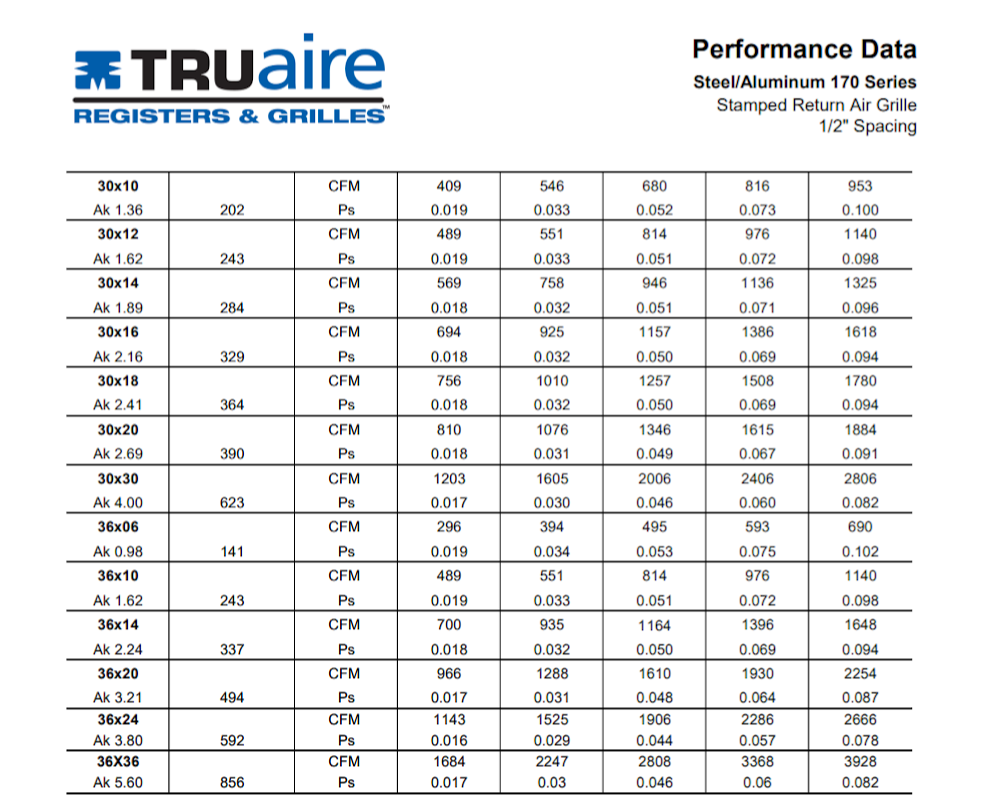Get Tech Tips
Subscribe to free tech tips.
Sizing Return Grilles
A few weeks ago, I spent several days redoing a duct system and replacing a furnace for a friend. I had static pressure readings from before the system was replaced, and with the new furnace that I had picked out, I had created a static pressure budget and felt confident I could significantly lower the static pressure on his system.
I was changing out the filter for a 4-inch AprilAire, increasing the size of all the ducts in the attic, and lowering the airflow. One thing I did not take into consideration was the return grille size. When I fired up the unit, adjusted the airflow settings (which are very confusing, thanks Amana!), and began measuring static pressure, a feeling of panic began to build inside of me. I was way above where I thought I would be.
Using my manometer, I quickly realized a large part of my problem was on the return side of the system. How could that be? As HVAC professionals often do, I started messing with stuff to see what was going on. I took the return grille off of the unit, and my static pressure dropped dramatically. At that point, I needed to do some research to size it correctly.
As David Richardson notes in his article on return grille sizing, the best way to go about sizing a return grille is by looking at your target feet per minute (FPM), which is determined by Manual D to keep the noise down. We’ve all heard a return grille whistling or vibrating oddly. Chances are, that return grille was sized too small. The target FPM from Manual D is 400. Then, you look at a manufacturer’s return grille performance sheet and pick a grille that satisfies the FPM and your CFM required. Here’s what that looks like for a stamped face return air grille:

The 5th column to the right is the 400 FPM column, and then you look for your target CFM. My target CFM was 1050. Ideally, I would have put a 30×30 return grille on the unit, but there wasn’t room for that. The best I could do was a 30×12 due to size constraints, which meant my FPM was still too high. What if I had used a commercial return air grille with a better AK (free surface area) factor?

On this chart, the 4th column is the 400 FPM column. The airflow at 400 FPM is 916 CFM for a 30×12 high-end commercial grille vs. 551 CFM for a stamped face grille! The system would have been much quieter and had a lower static pressure if I had understood this and sourced a better grille ahead of time.
If you don’t have access to the performance data for return grilles, you can use this rule of thumb from David’s article:
“An approximate rule of thumb to use when engineering data is not available is to multiply the filter grille area in square inches by 2 CFM for each square inch. This should keep the face velocity of the filter grille below 400 FPM. Using this rule of thumb method you would need a 20 X 20 return filter grille for a 2 ton unit rated to move 800 CFM. How often do you see a 20 X 20 return filter grille on a 2 ton unit? Answer: Not often enough.”
David Richardson, “Duct Dynasty: The Importance of Return Air Grilles”
According to this rule of thumb, the return grille I picked at 30×12 would be 360 square inches X two = 720 CFM. In the future, I plan to use this rule of thumb to determine if I need to upsize or change the return grilles. Then I can select some better grilles to lower static pressure and noise for future jobs.
—Matt Bruner











Comments
To leave a comment, you need to log in.
Log In